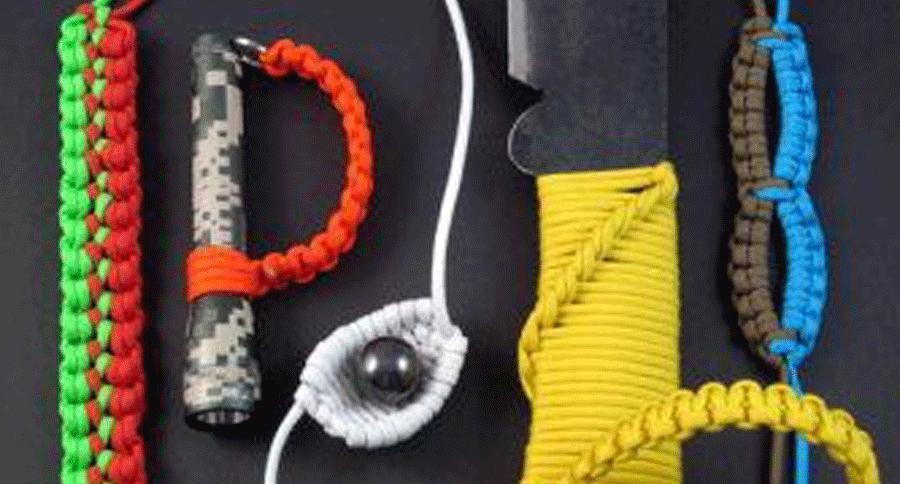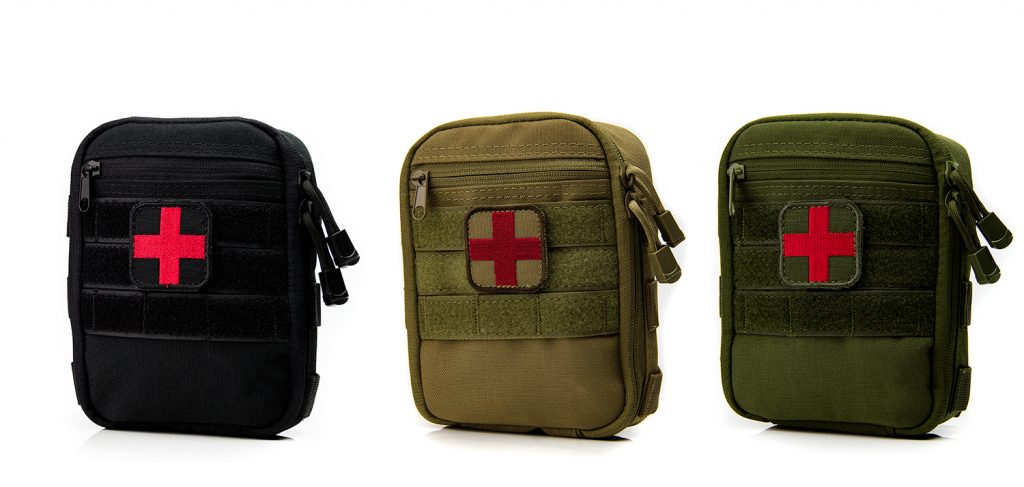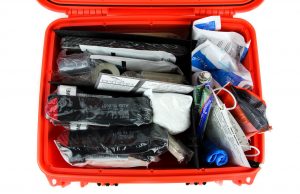
Fighting off an attacker isn’t just about hitting your opponent hard enough to make them stop trying to hurt you. It is also about making sure that any blows sent your way don’t harm important parts of your body.
When you are in this kind of fight, some of your efforts will aim defending vital body parts even if you’re also trying to strike your opponent. Staying safe comes first!
Here are five body parts that you must defend regardless of the nature of the attack. While not using other body parts will spell trouble, harming these five parts can cause permanent injury or loss of life. Keep reading!
But before going any further, there’s a DISCLAIMER that we should insist on.
Reading this article, or others, or watching videos is not enough to prepare you for an attack. You must practice these moves constantly so that you don’t panic or suffer from other adrenalin response related issues. Practice will also help you build speed, precision, and power behind each move.
In a fight, you may have, at most, 1 to 2 seconds (and that includes situations where you maintained good and accurate situation awareness and/or didn’t stray into a dangerous location) to make a good move and neutralize your opponent enough to stop them long enough to escape or prevent further attack if you decide to remain on the scene.
Watch Your Head
Aside from avoiding damage to your eyes, ears, and nose, protecting your head also helps you avoid loss of consciousness.
Pay attention to how the attacker moves. Usually, if someone is going to punch or use a small knife, their arm will move inward.
If the person moves towards the center of your body, move in the opposite direction instead of trying to “escape” by moving in the same direction or “away”. Even though this may feel like you are putting your head in line with being struck, it may throw off the attacker’s aim.
Remember, the attacker will expect you to startle and move your head away, and may already be compensating for that move so that they hit as squarely as possible.
If the blow cannot be avoided, try to move so that your forehead takes the blow instead of your nose, jaws, or eyes. This may be as simple as suddenly squatting down or using some other means to reduce the height of your head as quickly as possible.
You can also turn this move into the prelude to striking at the attacker’s legs by rolling into them, or smashing into their groin, knees, or other stable or sensitive areas. Clench your neck so that if a blow does land, it will not knock your head back and cause further damage to your neck.
In some cases, an attacker might throw a rock or something else heavy to your head or face. If you can’t move out of the way fast enough, cover your eyes and nose with your arms. Or, if you are already on the ground, tuck your head between your knees, and then cover the back of your neck with your arms.
Click here to get your guide to a layered survival defense!
Protect Your Neck
While your neck is a relatively small target, it is also a key one that many assailants will aim for first, so strengthen this part of your body as much as possible. Neck exercises won’t prevent you from choking, but additional strength in this area makes it easier to defend against any head and jaw blows that reach you.
If an attack is coming, keep your chin tucked in so that it is harder to reach your throat. Throughout the encounter, do not arc your head back, as it gives the attacker a perfect chance to grab your neck.
Make it a point to keep your arms and hands close enough to your head and neck so that you can block incoming blows easily, and also attack sensitive nerve junctions in the attacker’s arms.
Having your hands and arms ready to defend this region can also give you fast access to any other targets that open up on the attacker’s body as they try to strike. Remember, to land blows to your head, neck, and jaw, the attacker must reach in towards you.
There are many maneuvers to destabilize the attacker and send them flying past you as well as ones that can be used to attack in a more direct fashion. Remain calm and you will see the openings that will help you stave off the attack with as little injury as possible.
It may also help to keep your body in a position where one shoulder or the other is pointed towards the attacker. To make it work, however, you have to attack without revealing your intentions by rotating into an optimal position.
Once someone grabs ahold of your neck, it is still possible to escape, however you will need to use these maneuvers in a matter of seconds:
- If the attacker is trying to choke you from the front, he/she will more than likely be looking to crush your throat.
- To get out of this attack, put your hands together as if in prayer, and bring them up hard and fast between your attacker’s arms.
- As your arms contact the inner arm area of your attacker, you can try gouging your elbows into the pressure points in the bicep and also midway up the forearm.
From there, you can use different pressure points to inflict maximum pain to the attacker, however they may not be enough to enable you to escape. Here are just a few options:
- Continue the motion until your hands grasp the side of the attacker’s head. Next, lock your hands, and gouge your thumbs into the attacker’s eyes as hard as you can. If you cannot reach the side of attacker’s head, then just poke your fingers into their eyes.
- You can also try sticking your thumbs hard into the mandibular nerve just below the ear, twist your thumbs, and pull forward. If you do this maneuver right, it will cause immense pain and cause the attacker to gag. It can also dislocate the attacker’s jaw if you pull forward hard enough.
- The area just under the nose is also a trigger point for immense pain if you hit it just right. Needless to say, you can always aim for the attacker’s nose and try to break it. These maneuvers may not work as well because your attacker may try to bite you.
- When working with nerve points, no matter where they are on the body, do not give up if the first blow or attempt doesn’t neutralize the attacker. In many cases, hitting a second time will neutralize the attacker because the nerve was weakened by the first blow, and may give in completely with the second one. If all else fails, try again; although if you practice diligently, two should be enough because you will know where to hit and have a well honed technique to work with.
Once you have inflicted some pain to the attacker, knee male attacker’s in the groin, perform a headbutt, or use other methods to break the attacker’s hold.
If you are a woman wearing high heels, you can also place the outside of your foot against the attacker’s inner leg, and stamp down hard. Practice this maneuver so that you have a good idea of how to jam your heel into the attacker’s ankle bone.
Don’t aim for the attacker’s foot, as they may be wearing steel toed boots, or something else that will make your heel less effective. On the other hand, even an ankle covered in a boot can be impacted with this method.

Don’t Drop Your Jaw!
A blow that lands squarely on your jaw can render you unconscious and lead to permanent injury.
While tucking your jaw into your neck can protect both vital areas, there are some additional things you must do to prevent damage to your jaw.
As simple as it sounds, keep your jaw as tightly clenched as possible. If a blow does land on your jaw, this will reduce the risk of breaking your jaw, and also help reduce damage to your teeth. A clenched jaw also moves less, which means that there is less chance of being knocked unconscious.
Warming up your jaw with a few exercises can also help reduce injury. But if you are caught unawares, you will not have time to prepare your jaw muscles.
On the other hand, if you have a good level of situation awareness, you will probably have one minute or two needed for these exercises. Individuals that have experience with gaining control of adrenalin responses may also use these exercises as a trigger that will help them prepare mentally and emotionally for conflict.
Solar Plexus and Abdomen
This is one part of your body where some of your defense can be grounded in exercises done before you ever get into a fight. Strong, non-bloated, abdominal muscles will be able to take a blow with less injury and pain.
There are many exercises and methods you can use to build up this core area of your body. Aside from improving the chance of recovering faster from a blow to this part of the body, any move you make will have more power behind it.
If you need to defend against a knife attack or some other weapon other than hands and fists, you will need to use more offensive moves than you would for breaking an attack to your neck.
Here are a few things you can try. Instead of dropping your arms and hands from their defensive position near your head and neck, use your feet and legs instead. Among other things, you can continue pivoting and moving so that your side remains facing the attacker.
 If the attacker gets too close, you can pivot slightly towards them and use your knees or feet to attack their shin, groin, or knees. As with blows to the face, someone with a knife may expect you to continue pivoting away rather than take a chance of being stabbed or struck with a weapon.
If the attacker gets too close, you can pivot slightly towards them and use your knees or feet to attack their shin, groin, or knees. As with blows to the face, someone with a knife may expect you to continue pivoting away rather than take a chance of being stabbed or struck with a weapon.
The opposite move may throw your attacker off for a fraction of a second as long as you don’t give away what you are about to do. Needless to say, if you can kick the knife away or disable their arms first, you will be in a better position.
As you pivot, look for an opening where you can grab the attackers outstretched arm and pull them forward. If at all possible, try to combine this with stamping on the foot, or using your knee to kick behind their knee in order to drop them to the ground.
These actions must be taken very quickly, as they will leave your head and neck unprotected. If you practice enough different kicks and rolls, you can use different maneuvers that still keep your hands free for defending your head and neck.
Back/Spine
Unlike other vital parts of your body, you can harm your back or spine more with improper technique than your attacker can with primary blows. A as a general guide, you better keep your back away from your attacker. If you are facing multiple attackers, put your back against a wall so that none of them can get behind you.
It is crucial to practice falling, rolling, and other techniques used during an attack scenario. No matter how much you practice, or how hard you train, you can expect to find yourself on the ground. To protect your back, knowing how to break a fall and roll will:
- protect your back and neck much better than simply landing where ever and how ever the fight sends you
- can also move you away from the attacker
- can be used to set yourself in a position where you can attack your adversary.
Once on the ground, do not expect to get up immediately, and do not expect your attacker to simply stand around and wait for you to get back up. It may be necessary to kick, or roll out of the way to get into a better position or avoid other blows.
When you watch a skilled martial artist or other fighter, everything they do seems effortless. On the other side of the equation, each move they make is based on careful analysis that happens very quickly because they have the strength, muscle memory, and experience to carry out these moves as efficiently as possible.
Learning about different moves that can protect vital parts of your body will definitely help you face an attacker, but you must also take the next step and find a qualified trainer and a safe place to practice.
Survival defense is one of the skills that you just can’t miss if you want to keep yourself and your family alive. Click the banner for more!

This article has been written by Carmela Tyrell for Survivopedia.
References:
http://www.policemag.com/channel/patrol/articles/2016/04/gaining-compliance-with-targeted-pressure.aspx
from Survivopedia
Don't forget to visit the store and pick up some gear at
The COR Outfitters. How prepared are you for emergencies?
#SurvivalFirestarter #SurvivalBugOutBackpack #PrepperSurvivalPack #SHTFGear #SHTFBag


 “First, the disaster will come. It will come like they always do. It may start slow and steady but eventually, it will reach a fever pitch. The destruction brought on by man or mother nature will ravage all that dares step in its path. The audible effects of the disaster will give way to visual awe when the damage is quantified.”
“First, the disaster will come. It will come like they always do. It may start slow and steady but eventually, it will reach a fever pitch. The destruction brought on by man or mother nature will ravage all that dares step in its path. The audible effects of the disaster will give way to visual awe when the damage is quantified.” “Hello, my friend and welcome back! When it all falls apart, there will be a lot of people who will not want to believe it, but as they do come to grips with what is happening, there is one group that will immediately present a clear and present danger to you when it comes to survival.”
“Hello, my friend and welcome back! When it all falls apart, there will be a lot of people who will not want to believe it, but as they do come to grips with what is happening, there is one group that will immediately present a clear and present danger to you when it comes to survival.” “There are a lot of reasons why people prep for disasters, but there’s one reason that’s far more popular than the others. What people fear most when they think about what would happen if society collapsed, isn’t hunger, disease, or exposure. They fear what other people might do to them when the chips are down.They worry that members of their community might hurt or kill them to survive.”
“There are a lot of reasons why people prep for disasters, but there’s one reason that’s far more popular than the others. What people fear most when they think about what would happen if society collapsed, isn’t hunger, disease, or exposure. They fear what other people might do to them when the chips are down.They worry that members of their community might hurt or kill them to survive.”



 If there’s one thing that I absolutely take pride in, it’s my baking. I was raised eating biscuits. Baking and cooking skills were a source of pride, and insulting somebody’s pie crust was akin to fighting words.
If there’s one thing that I absolutely take pride in, it’s my baking. I was raised eating biscuits. Baking and cooking skills were a source of pride, and insulting somebody’s pie crust was akin to fighting words.





 This week’s main protein is bacon from the pig you shot two weeks ago. You have tomatoes from your garden and you have scavenged for parmesan cheese. You have traded another survival group for a bushel of peaches and some fresh cream. What would you make for supper?
This week’s main protein is bacon from the pig you shot two weeks ago. You have tomatoes from your garden and you have scavenged for parmesan cheese. You have traded another survival group for a bushel of peaches and some fresh cream. What would you make for supper?


 If the attacker gets too close, you can pivot slightly towards them and use your knees or feet to attack their shin, groin, or knees. As with blows to the face, someone with a knife may expect you to continue pivoting away rather than take a chance of being stabbed or struck with a weapon.
If the attacker gets too close, you can pivot slightly towards them and use your knees or feet to attack their shin, groin, or knees. As with blows to the face, someone with a knife may expect you to continue pivoting away rather than take a chance of being stabbed or struck with a weapon.
 Medical supplies expire. Any good medical kit,
Medical supplies expire. Any good medical kit, 
 Prescriptions, if you or a family member are on a prescription that requires a dosage regimen, daily, weekly, when a condition arises, this is something you must prepare for as most insurance/prescription plans limit your access to a 30-day supply. You need to know what your plan allows, if your doctor will work with your insurer to get authorization for higher quantities, and the proper storage and expiration of these medication. If you are limited by these controls talk to your doctor about alternatives to the prescribed medications such as supplements, or other homeopathic alternatives. For over the counter medications – allergies, headaches, etc. you should just keep track of your consumption over a period of time (a year would be good) and break that down (more allergy meds during spring, more cold meds during winter, etc.) and stockpile accordingly. Remember to factor in your possible changed environment as you may not be spending nights in your bed, air-conditioner or heater on, protected by a structure and remember these medicines have expiration dates as well and should be reviewed on your schedule.
Prescriptions, if you or a family member are on a prescription that requires a dosage regimen, daily, weekly, when a condition arises, this is something you must prepare for as most insurance/prescription plans limit your access to a 30-day supply. You need to know what your plan allows, if your doctor will work with your insurer to get authorization for higher quantities, and the proper storage and expiration of these medication. If you are limited by these controls talk to your doctor about alternatives to the prescribed medications such as supplements, or other homeopathic alternatives. For over the counter medications – allergies, headaches, etc. you should just keep track of your consumption over a period of time (a year would be good) and break that down (more allergy meds during spring, more cold meds during winter, etc.) and stockpile accordingly. Remember to factor in your possible changed environment as you may not be spending nights in your bed, air-conditioner or heater on, protected by a structure and remember these medicines have expiration dates as well and should be reviewed on your schedule. Do you know that saying, “cleanliness is next to godliness?” Well, it may be true, but how about staying clean in the wild? That’s a pretty interesting concept, especially for modern-day potential survivalists who never get their hands dirty in any real sense of the word.
Do you know that saying, “cleanliness is next to godliness?” Well, it may be true, but how about staying clean in the wild? That’s a pretty interesting concept, especially for modern-day potential survivalists who never get their hands dirty in any real sense of the word. If you don’t have a towel, which would be weird, you can use a bandanna or something similar as an improvised sponge.
If you don’t have a towel, which would be weird, you can use a bandanna or something similar as an improvised sponge.




 North Korea’s antics and activities have filled the news for months now, having accelerated since Donald Trump was sworn in as president.
North Korea’s antics and activities have filled the news for months now, having accelerated since Donald Trump was sworn in as president.